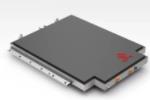Model 3 / Y too popular, less willing to push cheaper models in the near future
In the 120 years that the auto industry has been in development, there have only been two major revolutions in auto manufacturing, according to Wichita. One was the introduction of the Ford Model T, he explained, and the other was the cheap production method created by Toyota in the 1970s.
Wicha said, "The electric car, with its completely different internal architecture than the fuel car, will bring a third revolution to the auto manufacturing industry."
A cheaper Tesla electric car?
When asked about the possibility of Tesla producing a cheaper electric car, Wicha said the company would eventually like to produce a more affordable electric car. He explained that if a company wants to produce more volume, it needs a portfolio that reaches a wider audience, and Tesla needs to offer a cheaper car product before the company-run self-driving cab service comes online.
He said market demand for the Model 3 and Model Y electric cars has been stronger than expected, so there is less incentive for Tesla to launch new models in the short term.
"The Model Y is basically going to be the best-selling car in the world ever next year," Veach added, taking into account rising costs at the Fremont, California, plant and the shrinking car rental business.
"It's a significant sales lever that we've never encountered before, but it may boost demand in other ways going forward," Veacha said.
The future of Tesla's fully self-driving software
The topic of discussion then shifted to Tesla's Fully Self-Driving (FSD) software service. About 100,000 people are using a beta version of FSD on U.S. city streets where drivers can intervene at any time, said Wicha, who expects the beta version of FSD to be rolled out to all Tesla vehicles on U.S. roads by the end of the year, based on data Tesla has seen. Wicha stressed that this is a "supervised autopilot" system, and that drivers still need to pay attention to the road or they may not be able to use the service.
Tesla can gather more data from driver interventions to help solve Autopilot problems and improve the system through software updates, Vichar said. He added that this iterative process will eventually allow Tesla to achieve fully autonomous driving.
"We strongly believe that large-scale data collection and artificial intelligence is the only way to solve the fully autonomous driving challenge," Vichar said. "That's the path we're going to take."
Vichar described the Model X and Model S as Tesla's first-generation platforms, with the Model 3 and Model Y as the second generation. Self-driving cabs, he explained, are the company's third-generation platform.
OTHER NEWS
-
- VW announces €20 billion investment in batteries by 2030, opens Europe's 1st new battery plant this week
- By 8 Jul,2022

-
- Toyota's operating profit may fall 15% in Q1 this fiscal year as production targets are cut several times
- By 5 Aug,2022

-
- Faraday Future FF91 range is out: EPA standard can run 613 km
- By 27 Sep,2022

-
- BYD's pure electric bus wins first order from Spanish bus operator Arriva: equipped with lithium iron phosphate batteries, to be delivered in 2023
- By 15 Jul,2022

-
- Dongfeng Motor: The company's latest power battery system has passed the real vehicle test, the range can exceed 1000km
- By 26 Sep,2022

-
- Foxconn receives first order for self-driving electric tractors, production to begin in first quarter of next year
- By 11 Aug,2022
